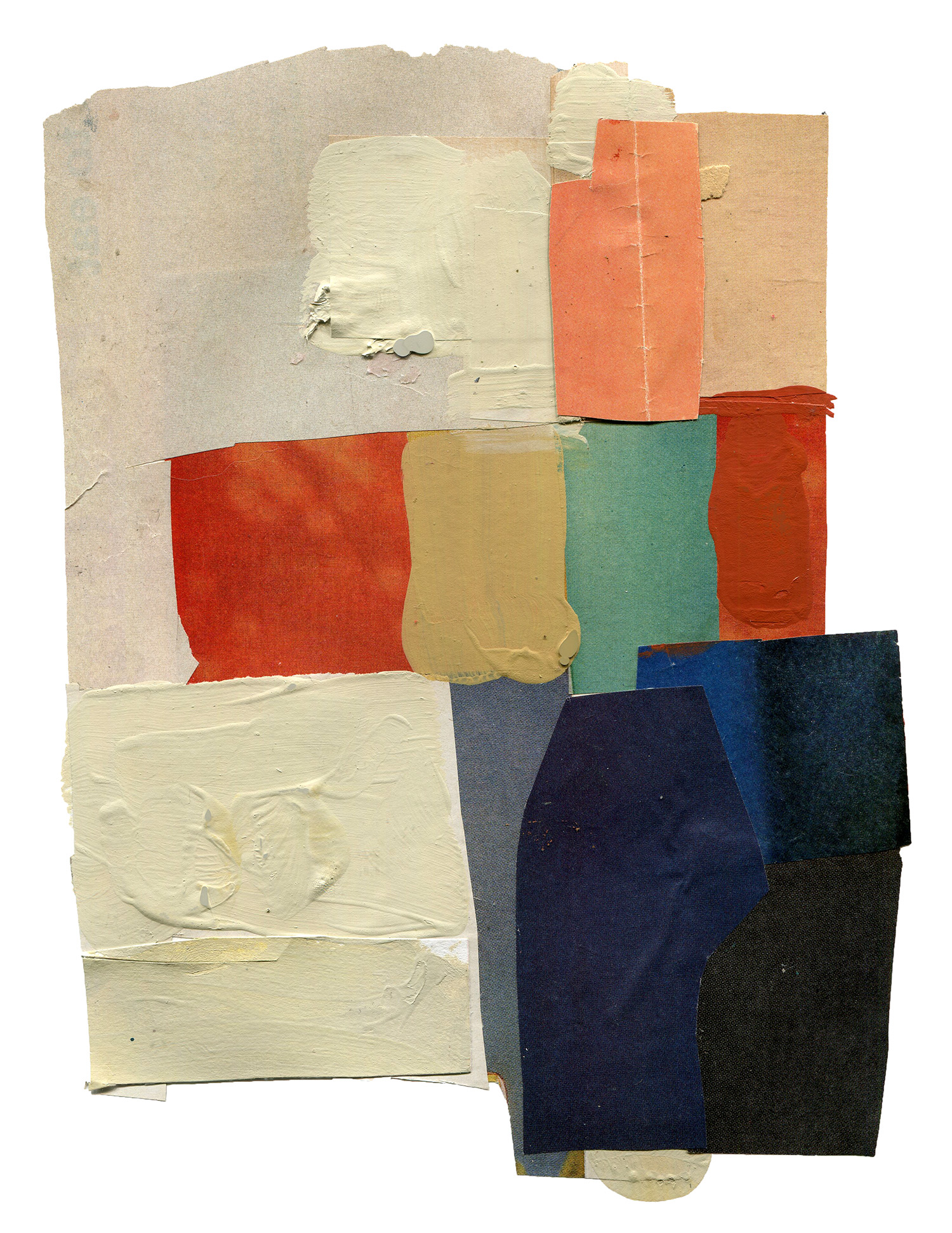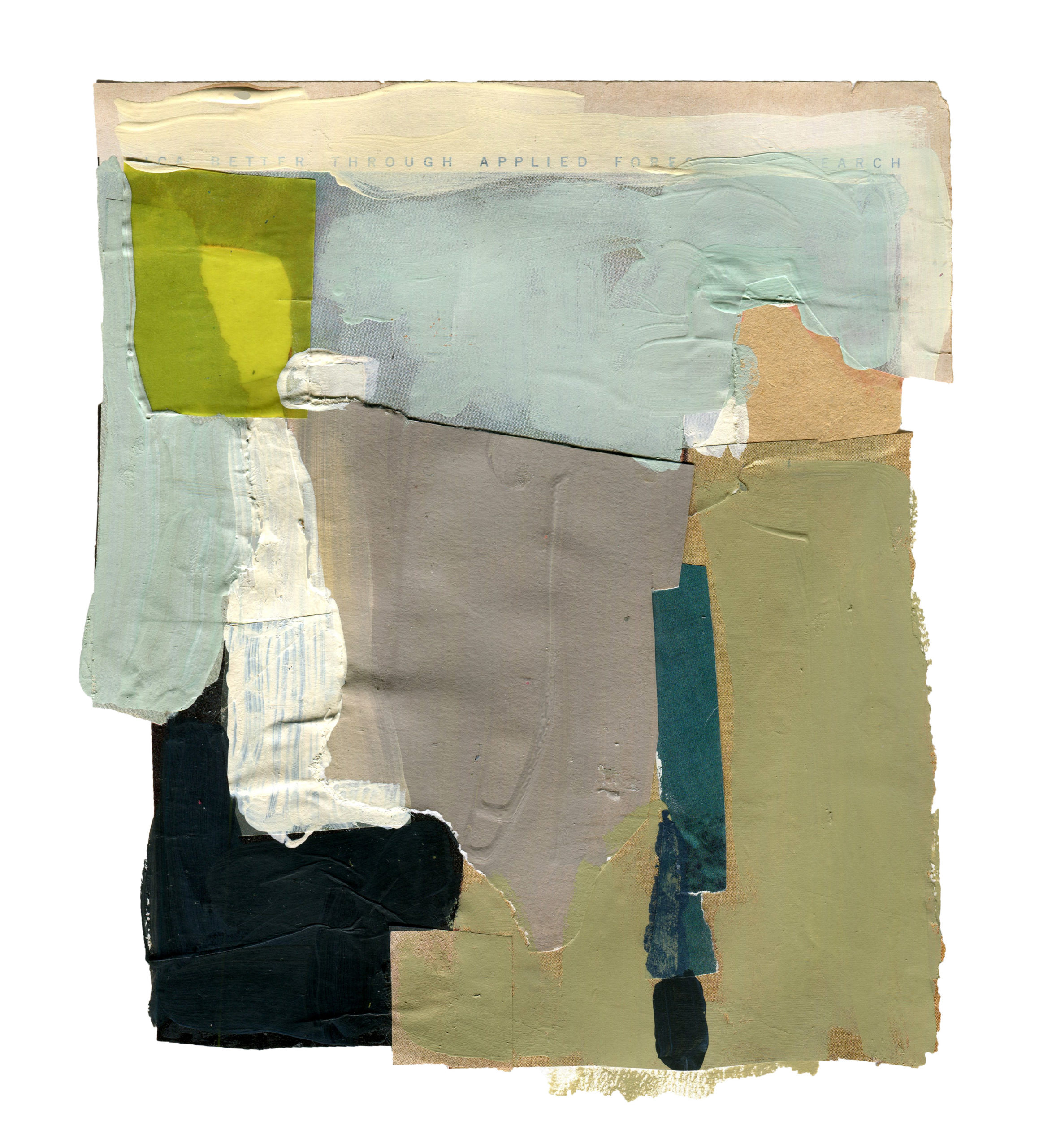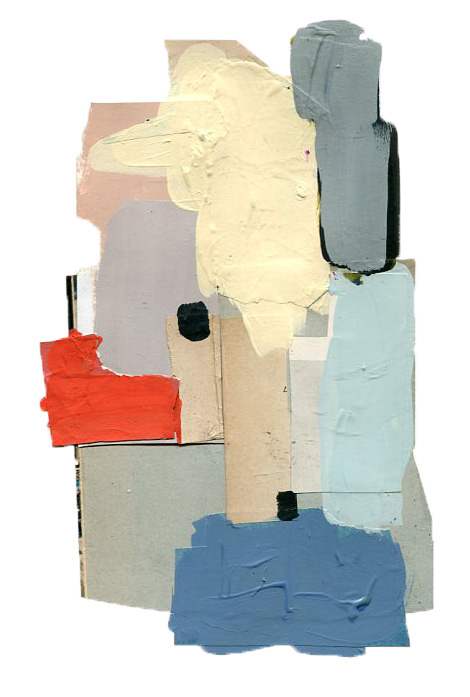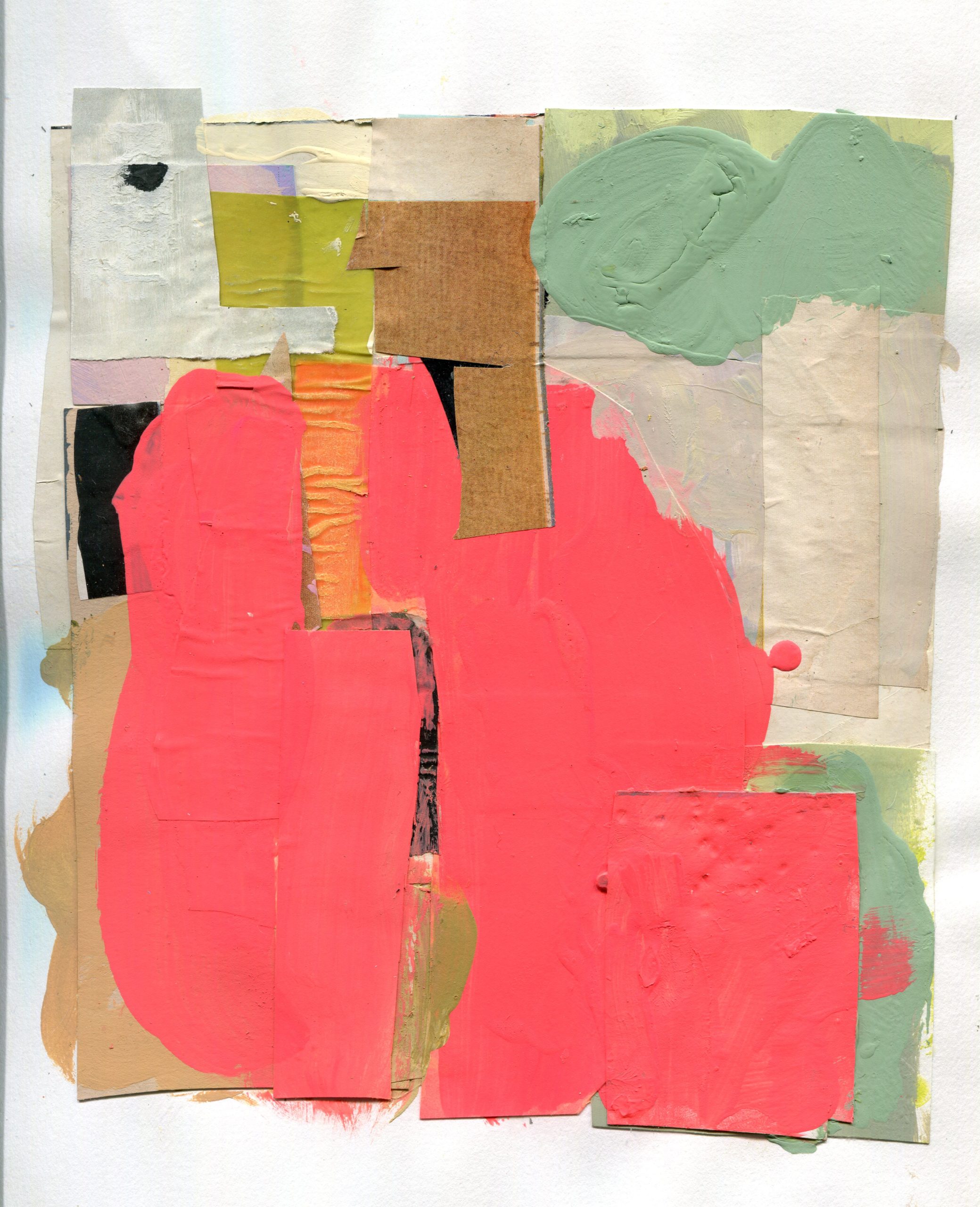Surprisingly, what had first caught my eyes were the textures. It was the thickness of the cutout pieces, the brush marks left behind on the paint, and the dots and faint words showing through. I was not in a rush to make out the composition, usually what I’d do with collages.
What had caught my attention next was that the source of the cutouts didn’t seem to have any importance. They were abstracted to the extent that they were down to the molecular level of pure shape and color, or just a feeling.
I was then pleasantly surprised at how easy it was for me to see the title in the artworks. I understood that it was, indeed, an “Avocado Toast”.
Patti Robinson‘s pieces are like extreme mosaics of our daily life to me. They intrigue viewers with colors, but they radiate a strong yet unspoken relationship that is calming and highly understandable, making them quite different from the typical abstract work.

Image on left: Quilt
i) Can you tell us a little bit about yourself?
My friends might describe me as relentlessly creative and passionate about the people I care about. My friends would say I’m grieving and evolving to find new meaning. My work is helping me to do that. It’s a quest. I’m a searcher. I don’t like to follow rules.
ii) How has the name Joseph Cornell influenced you?
I learned from the work of Cornell that collage can be a very personal and very moving form of art. Something that can be very meaningful for the artist and for the viewer. Intimate. It can be a way to share your inner landscape and create something magical. Everyday life can be quite routine, collage is a way for me to find magic and share it.
iii) What is the most important “little thing” to you?
One little thing has been finding my collage tribe on Instagram, it’s been a meaningful way to connect with other people. It’s been a way of communicating visually, without words, on a very deep level. I guess it’s not a small thing after all.
Image above: Fruit Cup | Image on right: Toast House
iv) How does living in a never-remodelled 1950s home filled with vintage inspirations vs a presence online, where you reignited yourself through a 100-day project and started virtual collaborations help your art?
I always love reading the vintage magazines I’m working with, they say so much about American culture. Gender roles have evolved in a positive way. Commercialism is, to me, now just a different set of instructions on how to “buy” the current aspirational lifestyle. To me, “the only thing constant is change” doesn’t ring true. A constant is our craving to connect with others to feel truly alive. Here in the US, finding a community where we live can be quite challenging. It’s wonderful to connect with people around the world who we often have more in common with than our neighbors. And my retro home is a kind of meaningful connection too, it connects me to the family that has lived here, and all that we’ve shared.

v) Does the process of creation give you new emotions?
It’s always a sense of discovery, and that is a way of feeling really alive — finding out something new. If I put off creating for a while I don’t really feel like myself.

Image above: Solitude | Image on left: Black Toe Nails
vi) Do you have any “failed” works?
My “ugly” pieces are when my design sense is totally turned off. Sometimes I just need to make a big mess. Sometimes on purpose, to clear the way to something new. To me, they aren’t failed pieces because they’re authentic — but I don’t post them to Instagram. I recommended making ugly art on purpose, once in a while. It’s very freeing, and can help break through a creative block.
vii) Can you tell us more about your five minutes-long creative processes?
Setting a timer, working with different kinds of limitations (using a different medium or very few random materials) can be a good exercise. Sometimes I’ll work on one piece for hours, but only in one sitting to stay in the moment. I pull pages from (vintage) magazines for their color and texture. I do have boxes of chaos, and they spill out onto my work table. I work in a small clear spot on a table piled with paper. I only separate pieces according to size. I create a kind of visual conversation between them until it feels right. I always know when it feels right.
viii) Can you tell us about your scraps?
I never pull a page that I specifically plan to use. I was a member of @TheCollageClub for a while. Everyone in this group works with the same image, weekly. The original image almost never made it into my final cut so decided the group wasn’t a good fit for me. I don’t have any attachment to any of my scraps until I glue them down.
Image above: No Words
viv) Can you tell us more about the collaboration that happened at the New York Public Library with @cutpasteface and @jklinedinstcollage ?
Language is the most typical way we communicate in our daily lives. But it’s not always the most interesting. A touch, a kiss, laughter, music, visual art and dance can say much more. @cutpasteface and @jklinedinstcollage and I connected visually through Instagram, but we didn’t really talk before the collaboration. Our collaboration was a non verbal conversation, a very unique kind of communication. I love collaborations and try to do them as much as possible. Our collage group, @NYCollageEnsemble, shared a collaborative book making project during Covid. Each of us started a book and sent it to all the others to work on. The results were spectacular! I didn’t work in my usual style, and that’s always a fun challenge. My suggestion for others doing a collaboration would be to work quickly and intuitively. Allow for mistakes, someone else could turn that mistake into something very cool.
Image on right: The Blob!
x) What roles do the titles play in your works?
I don’t have a title in mind until the work is completed. It’s always an “Ah ha” moment, meaning I discover a personal meaning that I didn’t know existed until the words come to me. It can help give the viewer a little insight into my meaning, but of course people are free to find something completely different in the work.


